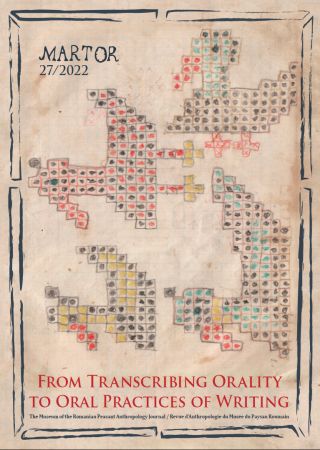The Amur Fishermen: Their Mythical History in the Oral and Written Dimensions
The Amur Fishermen: Their Mythical History in the Oral and Written Dimensions
Author(s): Olga Vl. MaltsevaSubject(s): Ethnohistory, Oral history, Cultural Anthropology / Ethnology
Published by: Muzeul Ţăranului Român, Editura Martor
Keywords: The Amur peoples; fishermen; orality; literacy; history;
Summary/Abstract: Before the 1930s, the peoples who inhabited the Amur region located in Eastern Russia transmitted traditional information only orally within their groups. That accumulated knowledge was a fundamental cornerstone for their mental world and mainly reflected the social processes that had been unfolding in the large river valley. The Three Suns Nanai cosmogony legend, which tells the story of the three suns that melted and scorched the Earth, is a good example for understanding the local history. The basic myth is split into several actions, forming independent subplots with separate characters and their behaviors. The branched storyline of the legend confirms the specific migratory processes that used to take place within the Amur territory. The new communities embedded their family stories into the Three Suns common myth. In that way, the migrators harmonized their lives with their world model, i.e., with the mythical universe seen as the otherworld where shamans sent only righteous human souls. Since the 1930s, with the spread of written language, the Amur natives have developed a new culture code which was created not by the older generation who still followed the oral tradition, but by the literate persons among them. Their entire folklore heritage was given a different conceptual design and began to be understood within world history. The local archaeological artefacts dating back to the third millennium BC were interpreted through the mythic narrative. Thanks to this discovery, a Russian-language simplified version of the legend was created which was accessible to a wide audience. Nowadays we witness the emergence of a new mythical history originating from this written version. Linking the legend to the archaeological sites makes the Lower Amur peoples’ history significantly older. According to modern understanding, the local history begins not with mythical events, but with a reconstructed picture of ancient social life embedded in the Earth’s topography and chronology.
Journal: Martor. Revue d’Anthropologie du Musée du Paysan Roumain
- Issue Year: 2022
- Issue No: 27
- Page Range: 29-46
- Page Count: 18
- Language: English

